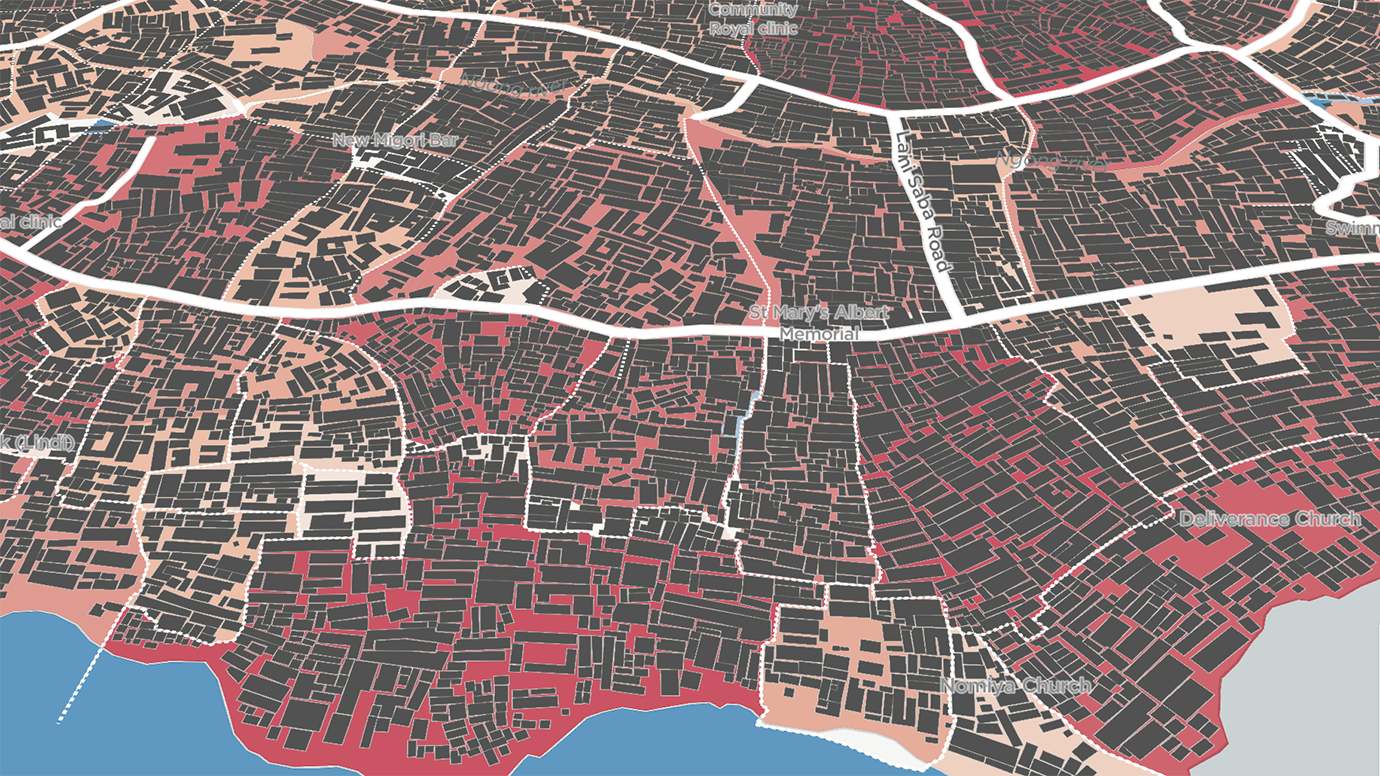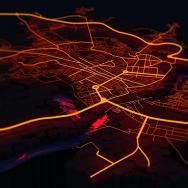Editor’s note: The following is part of Urban October at UChicago—an initiative of the University of Chicago Urban Network. Throughout the month, University scholars will convene key stakeholders and present new research and collaborations that confront urban challenges around the globe.
Urban scientists at the University of Chicago’s Mansueto Institute for Urban Innovation on Oct. 23 launched the Million Neighborhoods Map—a groundbreaking visual tool that provides the first comprehensive look at informal settlements across Africa, helping to identify communities most in need of roads, power, water, sanitation and other infrastructure. Updates for Central and South America, India, and parts of Europe and Asia will come online over the next several weeks.
The Million Neighborhoods Map is the first such map of its kind and digitally renders building infrastructure and street networks—or the lack thereof. The goal is to provide municipal leaders and community residents with a tool to help inform and prioritize infrastructure projects in underserviced neighborhoods, including informal urban settlements that are sometimes known as “slums.”
Rapid urbanization in Africa and Asia over the last few decades has led to massive shifts in population and the rise of informal settlements that operate without roads, power and sewer lines. In neighborhoods such as Kibera, Nairobi and West Point, Monrovia, homes are so densely packed that it can be challenging for residents and resources to move through the community, and difficult for urban planners to identify the best areas to build roads, water pipes, power and sewage lines.
The issue is more pressing than ever, as the number of people living in these settlements is expected to triple to three billion in the next 30 years if no large-scale action is taken. Without access to basic infrastructure, residents of informal settlements are more vulnerable to health risks and the impacts of climate change, including flooding, extreme heat and natural disasters.
To create the Million Neighborhoods Map, researches applied algorithms to an open-source GIS database called OpenStreetMap, which is unique because it is available free to anyone and allows volunteers and local residents to contribute data about the location of throughways, buildings and structures—even in informal settlements, which often lack consistent, publicly available data.
“The projected growth of informal settlements, in combination with the challenges of climate change, requires the world’s immediate attention. We hope the Million Neighborhoods Map will create a change in perspective and methods enabling new forms of community-driven urban planning,” said Luis Bettencourt, the inaugural director of the Mansueto Institute of Urban Innovation, a hub for urban science and practice dedicated to training the next generation of urban scholars. “Using this map, we can quickly identify the infrastructure deficits of entire cities and pinpoint areas most in need of improvements.”
“The projected growth of informal settlements, in combination with the challenges of climate change, requires the world’s immediate attention.”
“This map is a significant step toward locating where critical urban services are needed most,” said Nicholas Marchio, data director at the Mansueto Institute for Urban Innovation, whose team of researchers utilized the university’s supercomputer, known as the “Midway,” to calculate the immense amount of information needed to turn terabytes of data into an interactive, easy-to-use website that is accessible on a mobile device.
“We always talk about solutions, but first we need to know what the challenges and opportunities are. When a mayor is looking at this map, she can see which neighborhoods across the city require attention, and residents in slums or informal settlements can utilize this data to plan and advocate for their own communities,” said Anni Beukes, resident fellow at the Mansueto Institute for Urban Innovation.
The map’s release comes during the first day of the Global Symposium on Sustainable Cities and Neighborhoods, taking place at the University of Chicago on Oct. 23-25. Officials from UN-Habitat, researchers, technologists, international organizations and community leaders from Africa, Europe, and Latin America have gathered to develop a shared agenda toward empowering millions of neighborhoods to tackle issues of human development, infrastructure, and climate resilience.












